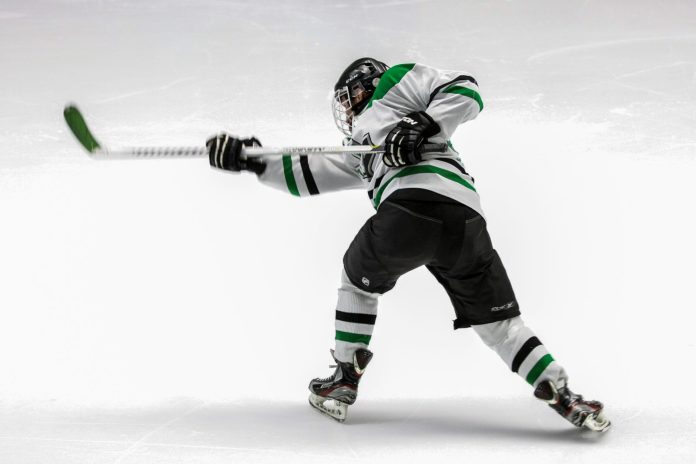Introduction
Ice skating is a beloved pastime that offers both a fun recreational activity and a competitive sport. Whether you’re a beginner taking your first steps on the ice or a seasoned skater honing your skills, ice skates are the essential tool that connects you to the ice. This guide will walk you through everything you need to know about ice skates, including their history, different types, key components, how to choose the right pair, and tips for maintaining them.
The History of Ice Skates
Ice skating has a rich history that dates back over 5,000 years. The first ice skates, discovered in what is now Finland, were made from the bones of animals, particularly horse and cow bones. These early skates were used as a means of transportation across frozen lakes and rivers. As civilizations evolved, so did the design of ice skates. By the 14th century, metal blades were introduced, and by the 19th century, skates had taken on a form that closely resembles the modern versions used today.
Understanding Different Types of Ice Skates
Ice skates come in various styles, each designed for specific activities. Knowing the differences will help you choose the right pair for your needs.
Figure Skates
Figure skates are tailored for figure skating, a sport known for its artistry, precision, and grace. These skates feature high-cut boots that provide ample ankle support, essential for jumps, spins, and other intricate maneuvers. The blades of figure skates are slightly curved and feature toe picks at the front. These toe picks are crucial for executing jumps and certain footwork, making them a defining characteristic of figure skates.
Hockey Skates
Hockey skates are built for speed, agility, and durability, which are essential for the fast-paced nature of ice hockey. These skates have shorter, more rigid boots that offer protection and support during high-impact play. The blades are curved, which allows for quick direction changes and fast stops. Unlike figure skates, hockey skates do not have toe picks, as they would interfere with the quick maneuvers needed during a hockey game.
Recreational Skates
Recreational skates are designed for casual skaters who enjoy skating for fun rather than competition. These skates prioritize comfort, often featuring padded boots and user-friendly closure systems like laces or buckles. The blades on recreational skates are typically flatter than those on figure or hockey skates, providing greater stability, which is especially helpful for beginners or occasional skaters.
Speed Skates
Speed skates are engineered for racing and are all about maximizing speed. These skates have long, straight blades that extend beyond the toe and heel of the boot. The boots are low-cut, allowing for greater ankle movement, which is critical for achieving the powerful, extended strides needed in speed skating. Speed skates are typically used in competitive settings where the primary goal is to cover distances as quickly as possible.
Components of Ice Skates
Understanding the anatomy of ice skates can help you make an informed choice and maintain your skates effectively.
Boots
The boot is the part of the skate that encases your foot, providing support, protection, and comfort. The materials used in the boot vary depending on the type of skate. Figure skate boots are often made from leather, which molds to the foot over time, offering a custom fit. Hockey skate boots, on the other hand, are usually made from durable synthetic materials that provide both flexibility and protection against impacts.
Blades
Blades are the metal edges that allow skaters to glide across the ice. Made from high-quality steel, blades are sharpened to create the necessary edge for skating. The shape and design of the blade differ based on the type of skating. Figure skate blades are slightly curved and have toe picks, while hockey skate blades are shorter and designed for rapid movement and agility.
Blade Holders
Blade holders are the structures that attach the blades to the boots. These are typically made from plastic or composite materials to be both lightweight and durable. In hockey skates, the blade holders are designed to absorb impact and provide stability, while in figure skates, they are constructed to offer precise control during complex maneuvers.
Toe Picks
Toe picks are a critical feature of figure skates, consisting of jagged edges at the front of the blade. These picks allow skaters to dig into the ice, providing the necessary traction for jumps, spins, and intricate footwork. Toe picks are exclusive to figure skates and are absent in hockey and speed skates, where they would hinder performance.
How to Choose the Right Ice Skates
Choosing the right pair of ice skates involves several considerations, including your skating goals, skill level, and personal preferences.
Determine Your Skating Activity
The first step in selecting the right skates is identifying your primary skating activity. Are you interested in figure skating, hockey, speed skating, or simply skating for recreation? Each activity has specific requirements, and choosing skates designed for that activity will enhance your performance and enjoyment.
Ensure Proper Fit
A good fit is crucial for both comfort and performance on the ice. Ice skates should fit snugly without being too tight. Your toes should just barely touch the front of the boot when standing up straight, and there should be minimal movement inside the boot when you skate. Skates that are too loose can cause blisters and reduce control, while skates that are too tight can lead to discomfort and foot problems.
Consider the Blade Type
The type of blade on your skates is just as important as the boot. If speed skating is your goal, long, straight blades that maximize glide are essential.
Ice Skating Techniques for Different Activities
Mastering the basics of ice skating is the first step to improving your skills, whether you’re figure skating, playing hockey, or racing.
Basic Skating Skills
For beginners, the focus should be on mastering balance and basic movements. Start by learning to glide forward and backward on the ice. Keep your knees slightly bent and your body weight centered over your feet. Practice stopping with a snowplow stop, where you push the inside edges of your skates outward to create friction and come to a halt. As you gain confidence, you can begin to practice crossovers, which are essential for turning and increasing speed.
Figure Skating Techniques
Figure skating requires precision and control, with a focus on movements like spins, jumps, and footwork. Spins involve rotating quickly on one foot, requiring excellent balance and the ability to shift your weight subtly. Jumps, such as the toe loop or axel, require a combination of power and timing to launch off the ice and land smoothly. Footwork sequences, which include steps, turns, and intricate patterns, add an artistic element to figure skating routines.
Hockey Skating Techniques
In hockey, speed and agility are paramount. Key techniques include the hockey stop, where skaters turn their skates sideways to come to a rapid halt, and crossovers, which allow for tight turns and quick direction changes. Skating backward is another critical skill for hockey players, particularly defensemen, as it enables them to maintain speed while keeping an eye on the puck.
Maintaining Your Ice Skates
Proper maintenance of your ice skates is essential for ensuring their longevity and optimal performance.
Cleaning and Drying Your Skates
After each skating session, it’s important to clean and dry your skates to prevent rust on the blades and mildew in the boots. Wipe down the blades with a soft, dry cloth to remove any moisture. Proper drying will prevent odors and prolong the life of your skates.
Storing Your Skates
When not in use, store your skates in a cool, dry place. Avoid leaving them in your car or any other area with extreme temperatures, as this can damage the materials. Use blade guards to protect the edges from nicks and chips, and consider using soakers—soft covers that absorb moisture—to prevent rust.
Common Issues and How to Fix Them
Ice skates can develop issues over time, but most problems can be easily fixed with proper care and maintenance.
Dull Blades
Dull blades are one of the most common issues skaters face. When blades lose their sharpness, they glide less smoothly and may even catch on the ice, increasing the risk of falls. Regular sharpening by a professional can prevent this problem and ensure your blades are always in top condition.
Blisters and Discomfort
If you experience discomfort, consider adjusting the fit of your skates by tightening or loosening the laces or using custom insoles for better support. Breaking in new skates gradually can also help prevent blisters.
Loose Blade Holders
If you notice any movement in the blade holders, it’s important to address the issue promptly. Loose holders can compromise your stability on the ice and lead to accidents.
Safety Tips for Ice Skating
While ice skating is a fun activity, it’s important to prioritize safety to avoid injuries.
Wear the Right Protective Gear
Protective gear is especially important for beginners and those participating in sports like hockey. Helmets, knee pads, elbow pads, and wrist guards can help prevent injuries in the event of a fall. For figure skaters, wearing padded shorts can protect your hips during jumps and falls.
Warm-Up and Stretch
Before you step onto the ice, take time to warm up and stretch your muscles. Cold muscles are more prone to injury, so a proper warm-up routine can prepare your body for the physical demands of skating. Focus on stretching your legs, ankles, and lower back to increase flexibility and reduce the risk of strains.
Be Aware of Ice Conditions
Always check the condition of the ice before skating. Look for cracks, bumps, or debris that could cause you to trip or fall. If you’re skating outdoors, be mindful of changing weather conditions that can affect the ice’s surface. Skating on poorly maintained or melting ice can be dangerous.
The Environmental Impact of Ice Skates
While ice skating itself is an eco-friendly activity, the production and disposal of ice skates have environmental implications. Fortunately, the industry is making strides toward sustainability.
Sustainable Materials
More manufacturers are now using sustainable materials in the production of ice skates. These materials include recycled plastics, organic textiles, and ethically sourced leather. By choosing skates made from sustainable materials, consumers can help reduce the environmental impact of their purchases.
Eco-friendly Manufacturing
Some companies are adopting eco-friendly manufacturing processes to reduce their environmental footprint. These practices might include reducing energy consumption, minimizing waste, and using non-toxic adhesives. Supporting brands that prioritize sustainability can help promote environmentally responsible practices within the industry.
Inference
Ice skates are the essential tool that connects skaters to the ice, enabling them to perform everything from simple glides to complex spins and jumps. By understanding the different types of skates, their components, and how to choose and maintain them, you can enhance your skating experience and ensure your skates last for years. Whether you’re skating for fun, fitness, or competition, the right pair of skates can make all the difference.



